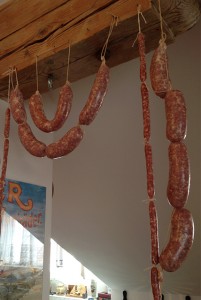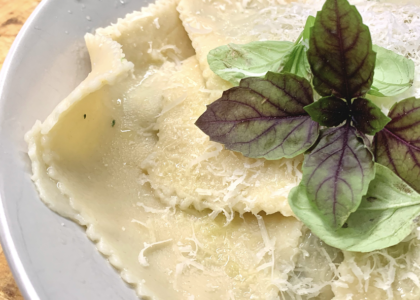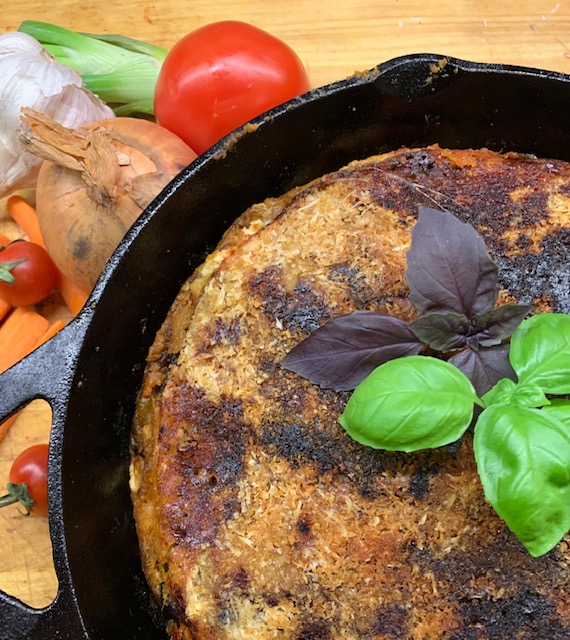She fiddled with her pen like a schoolgirl and smirked through her questions. “What did you do last Sunday?” she flirtatiously asked. Casting my eyes to the ceiling’s right-hand corner, I looked as if I was pulling my answer from the tobacco-stained tiles above. Foreign Police and immigration offices are always a strange place. They are made up of hallways of lost-and-found foreigners and crying babies. The air exudes cheap pharmacy perfumes, vapors from musty suits, and carries whispers in Russian, Ukrainian, and Vietnamese. You can hear dinging numbers ping like a deli counter, summoning the visitor into an office from a lit-up, Bingo-like board. “I made sausages,” I responded.
Sunday morning found the husband and I preparing sausages and how amusing it was – in terms of squeamishly touching half the stuff. I commend the willingness of my vegetarian husband on how he could clean the cow and sheep casings. He always has the “just let me do it” touch. I’ve always liked that about him. A hands-on kinda guy. The initial step was to open the casings and begin their wash and soak. The sheep casings had no distinct smell (the texture, by contrast, as a bit more interesting). The larger of the two, the cow hank for the klobasas smelled absolutely wretched. “Holy..! Open the windows!” I clamored. I immediately submerged the hank into a water bath, hoping it would alleviate the smell of death now evaporating all the springtime Sunday scents from the morning. “What is that? Jeez.” He looked over at me, casually holding some sheep innards (you know, the usual) and let his eyes linger on mine for a few moments. I got the point. I got back to work with a tougher attitude.

And on the morning went and on the sausages rolled out – smaller ones to bigger ones where we tied and strung them up onto the beams. It really was something. I have always been meaning to create my own sausages, for years, and finally managed to allow myself to learn the process. By midday the house looked like a small butcher shop or a French country home. I sat on the corner of my couch in my apron and gazed up. “Handsome, indeed.”
Most of us do love sausages whether that be in the form of a hot dog, salami, or klobasa. It reminds us of our childhood, picnics, and holiday weekends. We all know that what is inside is quite a mystery but because we love the stuff we consume them with trust, committing to the mentality not to think too much into it. But what if you wanted to know exactly what you are eating? Well, make your own.
First thing is first: casings. Decide whether your sausage casings will be synthetic or natural. These days it is not as easy to locate casings from your average supermarket so your best bet is to start with the local butcher. You may or may not have to go online to purchase them. Casings for larger klobasas or the French saucisson are from cow while sheep casings are smaller and used for breakfast or bratwurst links. A group of casings is called a “hank” and 1 casing is called a “bung”.
Secondly, decide on your meat. For me I chose pork to go in my natural casings. You want a 2:1 ratio for your sausage; 2 parts lean to 1 part fat. The best cuts would be a pork shoulder or butt while the fat ideally would be pork belly. Once you have ground your meat, the seasoning is entirely up to you.
Homemade Sausage How-To’s:
Seasoning your meat: You can choose a French sausage approach, as I have below with their traditional provincial seasonings, or venture to create a spicy paprika and cracked pepper Hungarian sausage. There is no one recipe, per se, for sausages as they vary by country and region. You can decide on 2 tastes, however, and split the ground meat into two batches, too. This is where your creativity comes into play! For a fuller flavor, season your meat 2 days before consumption so the meat will take on the desired flavor. After 2 days, create your links then cook.
On cooking: it is popular to grill sausages or fry them up for breakfast but why not try to poach them in a combination of white wine and stock? That makes for a delicious dish.
Working with your casings: Fortunately I was gifted a mixer with the attachments, including a sausage piping horn, from the husband. If you have a piping horn attached to your mixer, you are in luck. If not, try a pastry bag to fill (although a bit trickier) but you can be successful. Once you open the hank package, rinse the salt and place in a glass from anywhere from 15 minutes to overnight for salt removal. Run cold water through the casings before use and when ready, begin to work the casing up the horn with wet hands, removing air pockets. Do this slowly and carefully. When you begin to fill your casings do so with wet hands and guide the meat as it fills the casings with no air pockets. Should you have air pockets within the casing, use your fingers to try to massage them out from the casing. When finished, tie with twine and create links by twisting, then tying.

Storing Casings: Store the hanks in clean jars, filled with salt, under refrigeration with a dated label. Your casings will last up to a year as the the salt will work as a preserve.
Handling pork: It is essential that you keep a clean workplace and clean your kitchen afterwards thoroughly to prevent food-related illnesses.
Intro into Charcuterie:
Charcuterie, or the practice of preserving and curing meats like hams and sausages, is a popular method that has existed for centuries before the advent of refrigeration. Although we currently have the conveniences of modern day, we still enjoy the tastes of summer sausages, pates, terrines, and salamis. Curing your own meat is a rewarding experience and the anticipation itself until they are ready for consumption is quite enjoyable.
Curing: Follow the recipe below but work in more seasonings such as garlic, port wine, or maple syrup. The most important step to cure is to add more salt and sodium nitrite, or “pink salt”. For 5lbs of meat you want 1tsp of sodium nitrite. Contrasting, you can chose to add sodium nitrate, or “Saltpeter”. How much you add from either mixture depends on how much meat you will be preparing. Check with your local butcher or visit a trusted online site for how much you should proportionately add as over-consumption of either nitrate or nitrite can lead to illness.
Preparation and Storage: Store and cure your meat in a cool, ventilated room or cellar that is moist-free. The links should hang and do not touch. Depending on the size of your sausage, this can range anywhere between 3 weeks to 10 months. I currently am curing average sausage links for the next 6 weeks.


- 5 lbs (or 2 1/2 kilo) pork (combo pork shoulder, butt, belly)
- Casings (synthetic or natural)
- 1/2 cup port wine
- 1 tsp salt
- 1/2 tsp all spice
- 1/2 tsp cayenne
- 1/2 tsp dry bay leaf
- 1/2 tsp Provencal herbs
- 1/2 tsp white pepper
- Generous cracks of black pepper - 5-6 turns
- After grinding your meat, combine all ingredients with the pork in a large bowl. Form a patty and fry to taste. Correct seasoning if required. Set aside.
- Clean your casings by running them under cold water thoroughly to remove the salt, both through the casing itself and on the outside. Place in a cup of cold water for the remaining salt to separate for minimum 15 minutes
- When casings are ready, begin to work a casing (one at a time) up the piping horn using damp hands. Ensure that no air pockets form and the casing does not tear on the horn itself. When the casing is fully added, begin working the meat through the machine. Guide links with your hand as they begin to form
- When the casing is full, tie one end and begin to work up the sausage by removing air pockets with your fingers and turning the casings to create links of desired length. Finish by tying the other end
- Cooking: You may opt to grill or pan-fry your sausage links (or patties) or explore the French method of poaching the sausage in a combination of white wine and stock
- Curing: You may opt to cure your sausage for 3-6 weeks. If so, see the instructions within the post on how to cure your own sausage for future consumption
- Sausage can be cooked immediately or placed under refrigeration for up to 3 days.
- You can prepare the meat 2 days in advance with the seasonings before creating the links for the taste to mature and become fuller.
- Serve with sauerkraut, potatoes, or beans, bread, and a green salad. An iced-cold beer is always the beverage of choice.





